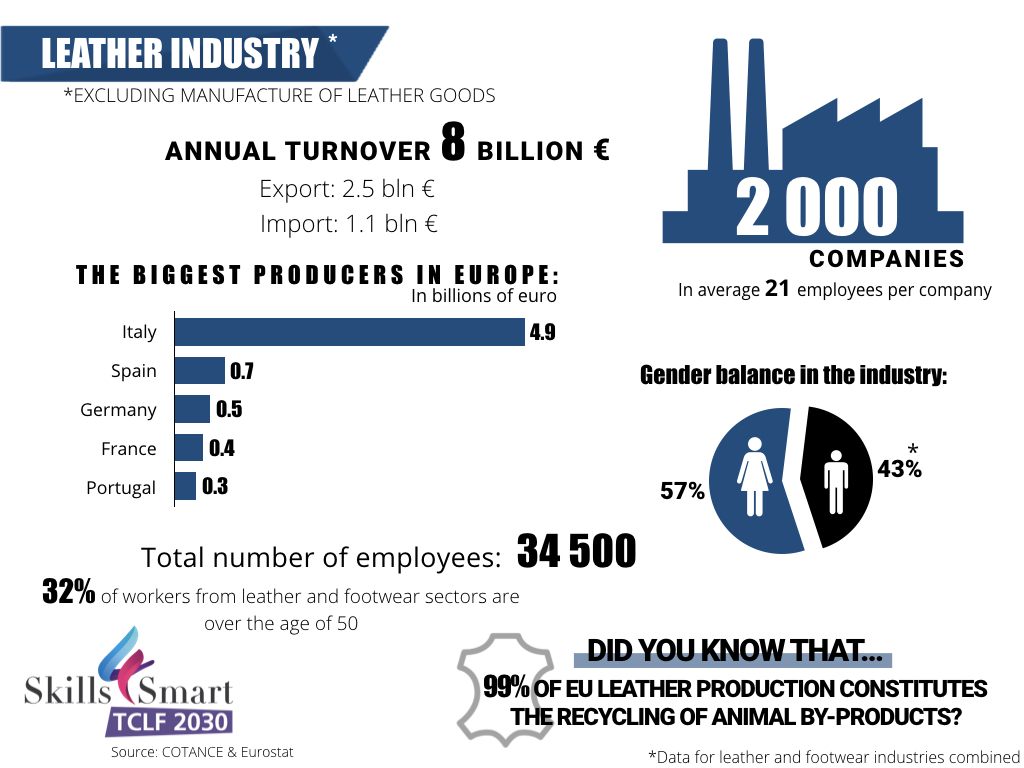Leather sector
Today, the leather/ tanning industry in Europe represents a strategic segment of the manufacturing sector, thanks to the combination of tradition and continuous innovation. European leather leads in terms of quality, technology, innovation, productivity, environmental performance, social accountability, design and style.
At national level, European tanneries present different characteristics, depending on their product specialisation. The most important tanning sectors of southern Europe, such as Italy, Spain, France and Portugal, are mainly composed of small and medium sized enterprises and are mostly specialised in the production of leather for the fashion industry. Conversely, the tanning sectors of central and northern Europe (Austria, Netherlands, Germany, Sweden, UK) are usually home to larger companies as economies of scale play a key role for their productions.
Europe’s main output is bovine leather, accounting for over 80% of production, followed by sheep and goat leather. As a matter of fact, about 99% of EU leather production constitutes the recycling of animal by-products, residues from the meat industry. The niche of exotic leather concerns a tiny share in terms of square meters (about 1% of the total) but it is quite relevant in terms of value. Such leathers are highly requested by clients of the luxury segment.
The principal destination use of EU leather has traditionally been the footwear sector, which is still the first client with a 38% share on the total. Nevertheless, in recent years, other important destinations increased, such as leather goods (22%) and car interiors (13%).
Quality means value; EU tanners supply the top ranges of the market segments in all the main specialisations and uses. Europe’s share of the supply to clients in the top and high-end segment is 25% of total global consumption, and also accounts for 34% of the medium-to-high value market.
Moreover, the use of European leathers acts as a driving force in the creation of value downstream. Production of almost 8 billion Euro worth of leather generates a turnover of around 125 billion Euro for its customers, creating business and employment for over 40 thousand companies and 2 million people.


